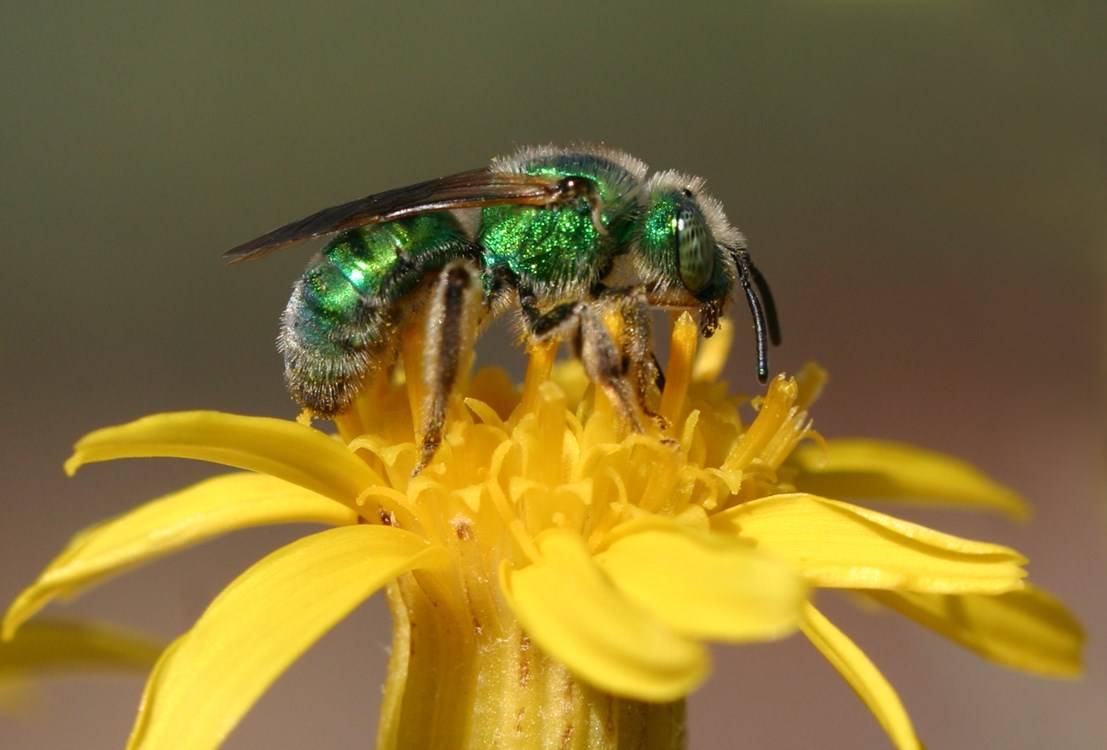Last updated: November 30, 2018
Article
The Buzz on Long-Term Bee Monitoring

NPS / Paul G. Johnson
November 2018 - Although we most often hear about plummeting numbers of honeybees, thousands of native bee species may also be in decline. These less-studied species are tremendously important, as they provide valuable pollination services to nearby croplands as well as to plants in more natural areas.
Pinnacles National Park’s bees are a perfect example. The park’s hot, dry summers and cool, wet winters combined with its variety of native vegetation rank it among the most valuable habitats for bee biodiversity worldwide. A preprint of an article now available reveals what biologists have learned from decades of bee monitoring at the park—namely, that it is critical that we keep looking.
Despite years of studies, including one published fifteen years ago that put Pinnacles on the map as a bee diversity hotspot (see "A Pinnacle of Bees"), new species are still being found with each survey. The authors reported 450 bee species, including 48 new species records as of 2012 and 95 species not seen since 1999.
These results suggest that the park may have the highest known density of different bee species anywhere in the state, and perhaps even in the world. However, it can be challenging to know how many bees there are because native species have widely different nesting habits, seasonal timing, lifespans, and visibility. Thus the need for regular, long-term monitoring to capture the bees’ range of seasons and habitats.
Check out the article preprint or contact Paul Johnson to learn more about Pinnacles bees.
